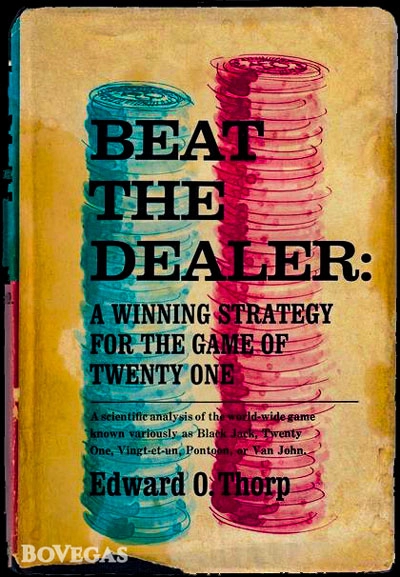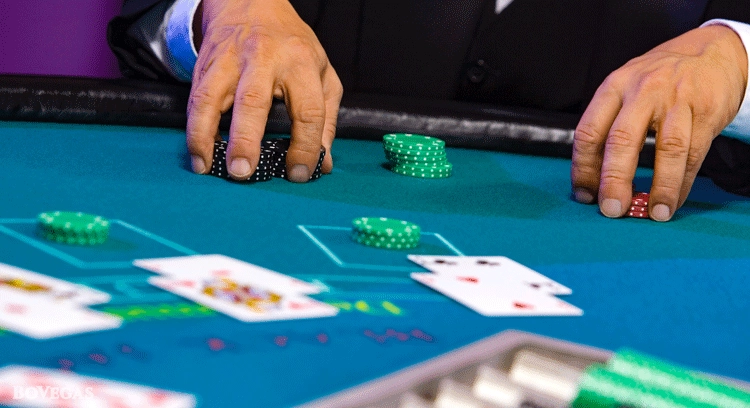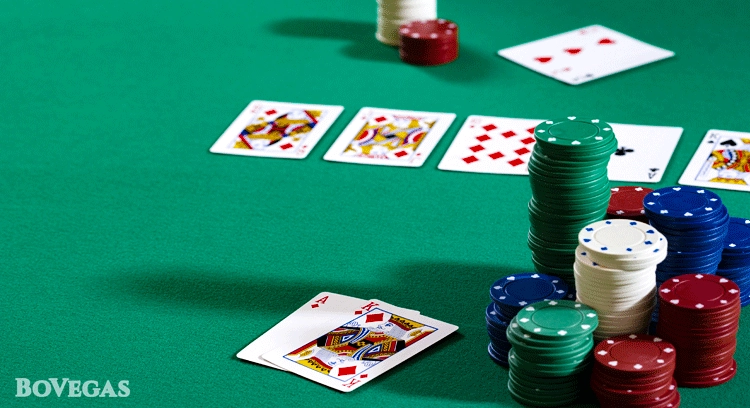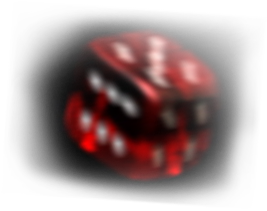



The casinos had never seen anything like it. Looking like everyday tourists, an unsuspicious family wanders in the Reno Strip, and finds a sure-fire way of beating the house. Yet what looks like a regular night out at the casino tables is actually a carefully crafted sting operation, involving secret signals, wires and a hidden computer, all designed to help one man make the right bets! That man is Keith Taft.
On an October night in 1976, Keith Taft and his group of card counters decide to hit the blackjack tables in Reno, Nevada (the second biggest city for gambling in America after Las Vegas). One of these men is his 20-year old son, Marty.
Two men approach the blackjack dealer to play; and as the action starts picking up, another man known as ‘the big player’ makes a handsome bet of $1,000. Over the course of just a few hours, everyone at the table is winning, amassing tens of thousands of dollars. It must be their lucky night! However, as the pit bosses are soon to realize, something much more sinister is at work here.
Indeed, before the night is over, the casino management senses some foul play, and they decide to grab young Marty into a backroom for questioning. Their suspicions are correct; they lift the man’s shirt to find a device strapped to his body, which is sending him secret messages. Young Marty is beginning to sweat, and he asks himself, “How did I get into this predicament?” Well, join us as we share with you the fascinating tale of Keith Taft – Blackjack legend and computer genius.
In 1969, Keith Taft was a full-time mechanical engineer working at the Raytheon Plant in Mountain View, California. Happily married with two kids, Taft was a devoutly religious man, who loved the church as much as he loved inventions. On one fateful night however, everything changed… as he walked into a casino for the first time in his life in Reno.

He was clearly not the usual kind of a casino-goer, as gambling and risk-taking were never on his mind. And this is because he had a different passion – innovation! He had been surprising everybody with all his inventions and contrivances, gadgets and gimmicks when he was still a schoolboy (hotwiring the doorknob being, perhaps, the most harmless one).
And he was also very fond of music. After his graduation, Taft was teaching music for 5 years and physics for 3 years, and only after that did he continue his studies, obtaining a master’s degree in physics. He married his school love, Dorothy, and got an engineering job in a company called Raytheon in Sunnyvale, California.
Actually, he wouldn’t have entered the casino floor if his wife hadn’t been insisting on it that day. It was that weekend when the couple decided to have a break. Dorothy thought her husband was working too much and too hard, and that he needed a break. So they left the kids with the grandparents and set off for Reno to visit Harrah’s Auto Museum. Yes, that’s right… their plan was not to visit a casino, but a museum! But that day every visitor of the museum was given “lucky bucks” – some free cash to play with in Harrah’s casino and resort. Taft didn’t really want to go to the casino, but Dorothy said something like “Let’s have some fun!” and there they went, not knowing what was going to happen.
The atmosphere managed to work its magic on them. The sights and the buzz, and the people playing and laughing, and clinking their chips… The Tafts played some casino games with little to no success; and with only a few “lucky bucks” remaining, they eventually walked to the blackjack tables, where everything changed forever – because they were finally able to win some money!
 Taft decided to learn blackjack a bit deeper. He had never gambled before in his life or even toyed with the notion; but as an engineer and inventor, he had a fondness for numbers, and blackjack was the perfect fit. But how does a devoutly religious man end up deciding to frequent the casinos of Reno? Well, he owed it all to one book, Beat the Dealer by Ed Thorp. Taft purchased this book when he came back to Sunnyvale after his first visit to Reno with Dorothy.
Taft decided to learn blackjack a bit deeper. He had never gambled before in his life or even toyed with the notion; but as an engineer and inventor, he had a fondness for numbers, and blackjack was the perfect fit. But how does a devoutly religious man end up deciding to frequent the casinos of Reno? Well, he owed it all to one book, Beat the Dealer by Ed Thorp. Taft purchased this book when he came back to Sunnyvale after his first visit to Reno with Dorothy.
Published in 1966, Beat the Dealer took the gambling world by storm. It crushed the notion that blackjack was a gambling game that was purely about luck, and showed instead that it relied purely on mathematics. So if a player was clever enough, they could still utilize a mathematical formula to beat the house. Thorp, a UC Irvine professor and math wizard, had developed a system known as “card counting,” and the beauty of this was that if applied correctly, a player could increase their play advantage in blackjack against any casino.
This was a revolution for would-be gamblers and cardsharps, and players from all over the country were desperate to get their hands on this bestseller. And one such individual was the impressionable and highly intelligent Keith Taft.
Counting cards is a simple but highly effective strategy that utilizes a “hi-lo system.” The cards are given the following values: 2-6 are given a value of +1 (plus one), 7-9 equal 0 (zero), and 10-Ace are equivalent to -1 (minus one). As the cards are dealt, the player establishes a running count, in order to determine how many high denomination cards remain in the deck.
If the value is low, the player bets small, if the value is high, the players have to bet big instead. So in theory, with some appropriately timed bets, the players can earn a fortune counting cards; the trick is just to master an effective count. Having read Thorp’s book, Taft had an epiphany. Counting cards in his head turned out to be too difficult for him. Instead of performing the mathematics and the task of memorizing numbers in his head, he would build a computer that could do the counting for him. As a mechanical engineer and amateur inventor, he had all the right tools to turn his idea into a reality… And indeed, into cold, hard cash.
Back in California, Taft built a computer in his spare time that was capable of card counting, with the intention of using it in a casino. The computer had to be small enough to sneak into a casino undetected by security. So unbeknownst to the dealer, he did precisely that.
After learning the basic strategy of card counting, Taft constructed a device that he could fit into the soles of a pair of shoes. He attached triggers to his toes that he would use to input manually the value of the cards the dealer would lay in front of him in binary form. The triggers were attached via wires to a computer device strapped to his body. The four switches reflected the card values, one above and below each of his big toes. One switch counted a value of one, another counted a value of two, the third counting a value of four, and the final, a value of eight. With this method, he could put in any combination of numbers used in blackjack.
With the device computing the appropriate card counting value, he could accurately determine when to hit and when to stay, all of which could be performed in a matter of seconds.
To get good at inputting numbers to receive a response, Taft practiced using his device while driving in his car. He would read the license plates of cars in traffic, so he could get faster at inputting the running count. Once the computer had finally calculated the card-counting value, the signal to bet big or small flashed via three colors (green, red, and orange) which were reflected inside a pair of special glasses he wore. In single-deck conditions, Taft now knew exactly how to bet, and so he gained a 3.5% edge over the house, all thanks to his device named “George.”
But even so, all that is easier said than done. Taft had spent a lot of time and effort working on this device of his – a 16-bit machine and compact random-access enough memory chips. And back then, in the early 70s, all these gimmicks were pretty much ahead of their time!
Right from the beginning, Taft knew about the risks involved if casino security caught him in the act. In those days, many of the casinos in Las Vegas, and particularly in Reno, were mob-owned establishments. There are countless stories about casino cheaters being taken into the backrooms and beaten to a pulp, only to be tossed into a back alley and then robbed of their winnings. Yet for some reason, Taft saw himself more as an opportunistic businessperson than as a cheater. He felt that he was not directly marking cards or influencing the dealer, but merely outsmarting them at their own game, by using all of the methods at his disposal.

Despite the dismay of his wife, Taft felt he really did have the chops to test his device at the casino blackjack tables, and (to quote Thorp)… To finally beat the dealer! In his eyes, the reward was worth the risk.
Taft didn’t just have to make sure his machine worked; he also had to develop real camouflage skills, to stay hidden under the noses of the pit bosses who were roaming the casino floors like hounds. As he approached the casinos of Reno in 1970, Taft circled the blackjack tables, device at the ready and strapped to his stomach. He was looking for what he called “ideal playing conditions,” where the dealer was not dealing too fast, and the table limits were high. So having made the trip from his home in Sunnyvale, California to Reno, Nevada, and with his blackjack strategy on hand, Taft was finally ready to play blackjack.
Taft’s goal was to reach $200,000 in blackjack winnings, in order to quit his job and then become a full-time inventor. He began by betting small, achieving a highly successful win rate using his new device.
In 1972, Taft and his son, Marty, started to make money at the blackjack tables. There had been some worries about whether the frequencies the computer generated would betray them, but that was not the case. The casinos started to pay attention to Taft and his son, suspecting some cheating – however, they were still unable to find out why they actually kept on winning!
Tafts moved to a larger house. Indeed, things went smoothly at first, but he soon realized that he would have to up the ante to see any significant returns with his new blackjack strategy. When counting cards, he felt under some real pressure, as his wife tried to discourage him from pursuing his newfound hobby; worried about the potential demons that gambling reflected. As a man of morals; these thoughts weighed heavy on poor Taft’s conscience. Yet he still thought he could do no wrong, arguing that the potential winnings would help provide for his family, and begin his life anew.
In order to make big money, Taft started taking bigger risks; increasing his single wagers into thousands. However, he was to learn the hard way over a short period that his wins were merely a matter of luck, and his odds were no better whether he used “George” or not.
As a math expert, he knew that the laws of probability were bound to catch up, and that his machine was infallible. But there was just one catch: he didn’t have the kinds of serious funds that would help him overcome any heavy losses he incurred.
And that’s precisely the mistake many blackjack players still make: failure to match the size of the bankroll to the size of the bets. A losing streak will occur, and nobody knows how long it will be, so you need a sizeable bankroll to survive it – as simple as that.
Not long after a series of runs at the Reno blackjack tables, Taft found himself over $4,000 in debt. This wasn’t just his money, but also his family’s money, his kids’ college tuition; he couldn’t bear the guilt of losing any more. Taft returned home to California with his head hung low, and his tail between his legs. He decided to retire his machine, and gave up his efforts of counting cards.

In 1975, Taft, who was convinced he would never gamble again, became the subject of a news article for the San Jose Mercury News, where he described his efforts with “George” and his failed attempts at counting cards. Although he initially assumed that hardly anyone was going to read the article in question, he found that not long after its publication, one of the most famous blackjack card counters of all time contacted him. This was none other than Ken Uston!
Uston was a notorious cardsharp throughout the 70s and 80s, and his team of counters managed to win millions of dollars from various casinos throughout Las Vegas and Atlantic City. Taft agreed to meet with Uston, after Uston convinced him to consider counting cards again. He proposed a deal that offered 10% of any future card counting winnings from his team, in exchange for five new devices.
The original plan was for Taft to teach Uston’s players how to use the devices in conjunction with Uston’s card counting blackjack strategy. However, they soon learned that none of the members of Uston’s team could use the device as well as Taft or his son. Taft and his son Marty, at his own request, would have to participate in Uston’s game. Together, they had the potential to take on the casinos for hundreds of thousands of dollars, potentially millions! Nothing could stop Taft and Uston, and so their team set off to Las Vegas.
They used a deceptive three-person blackjack strategy. Two members of the card counting team equipped with the devices, now dubbed “David,” from the biblical story of David and Goliath, would sit at a blackjack table and start counting cards and placing bets. They used subtle hand gestures to signal the “big player,” a supposed stranger, who at a critical point in the deal, would approach the blackjack table and then place a massive bet. The results were phenomenal!
Within months, the team was reporting an 80% success rate, and earning hundreds of thousands of dollars as they moved from casino to casino. Uston, who was no stranger to big action, was in his element; and the team split the pot.
To the chagrin of Taft, Uston and his team started taking bigger and bigger risks at the blackjack tables, with Uston’s team eventually dropping out. Remember of course that although counting cards is legal, casinos heavily discourage it; they generally give possible card counters their infamous “backroom treatment” and add them to a blacklist.
After feeling too much heat from the casinos of Las Vegas, Taft, his son Marty and Uston headed over to Lake Tahoe in the north. On that one fateful night of heavy card counting, casino staff caught on to the team’s antics, and Taft’s son Marty was caught in the act. The police were called, which led to an eventual investigation by the FBI.
During the 1970s, there was no law in place to ban the use of devices or computers to aid gamblers in casinos. A court ruled that the device was not a form of cheating, and thus legal. However, the incident was enough to scare off Marty from card counting for good.
A beautiful engineering mind like Taft’s will never rest on just one gimmick. So, captivated by the idea of trying to see the dealer’s hole card, Keith Taft and his son Marthy decided to develop a device incorporating a small camera. The best place to hide the device was a fashionable belt buckle. The camera was meant to snap the images and to send them to a small one-inch screen in the Taft’s pocket. Another component of the whole spyware layout was a prism in the glasses, which allowed Taft to look inside the pocket without looking down. The idea was brilliant, but the technical means of that time weren’t good enough to smoothly operate the whole system – the glasses had to be too big and too dark, which was raising suspicions; the one-inch screen was glowing from the pocket, etc. etc.
However, Taft didn’t give up. He upgraded the camera and had it sent to another person with a computer in the car outside. Having received the images, the person in the car would give advice to the player in the casino over a walkie-talkie. This worked pretty well, although it still slowed the game down a bit… But Taft was still able to use these gizmos for years before the casinos finally found out what was going on.
By the 1980s, Uston had been banned from nearly every major casino within the U.S., and Taft had received 60 days in prison after constructing a device that secretly recorded dealers’ cards using a small video device. Taft finally decided to give up card counting for good. For the sake of beating the dealer in blackjack, Taft risked his faith, his family and his future; and yet, he still managed to walk away unscathed, and even with a little extra money in his pocket. And in 2004, Taft was inducted into the Blackjack Hall of Fame; he passed away two years later.
Blackjack truly is a remarkable game, and it’s very easy to learn. Indeed, once you’ve mastered the ins and outs of blackjack, why not test your luck at the blackjack online tables at Slots of Vegas casino! Slots of Vegas has a wide offering of incredible online casino games, which are sure to make you really feel like you want a game of blackjack. Win big on Perfect Pairs and Super 21 to beat the dealer and then win big. You can choose to play free using the Instant Play feature, or else make a minimum deposit to earn all those big gambling dollars.
Keith Taft was born in a small town in Montana in 1934 and died in his house in California in 2006. The years of his most active professional growth fall on the period of the rapid development of electronics and micro miniaturization of the devices. His work has proven him to be one of the brightest minds of all, although he had never especially good at card games.
They managed to catch Taft because he was winning, and it looked suspicious. However, it took years for them to find out about what exactly it was. However, Taft had also made several mistakes – he revealed to the press some facts about his early devices, which meant it was only a matter of time before the whole story surfaced!
The main outcome of his work was that in 1985, using a computer in blackjack was legally judged to constitute possessing a cheating device. Taft’s work had no major effect on technological progress in general; but ever since then, it has made the game industry and the legislators to pay serious attention to everything that could be reasonably described as a “cheating device.”
Yes, you can! But you do need to get some serious training. You also need a lot of practice, and perhaps something of a gift for the game as well! Because after all, not everybody can really do it. However, there are still many successful card counters in blackjack – and that’s why the casinos do tend to make strong efforts to track them down and to effectively ban them.
You may not bring any cheating devices – i.e., devices helping to forecast the odds or to aid in a strategy (like card counting). Also, computers, laptops, and cameras are not allowed.

It is quite difficult to explain why people are always interested in “record-breaking events” or just “big stories” about anything. And this is exactly the case with roulette. You could find many fans of the “biggest roulette wins” tales, even among those who have never entered a casino floor to make a wager. And, perhaps, […]
In the popular imagination, gambling is generally associated with men, by default. Historically, casinos were considered to be male establishments. But over time, the situation changed, and more and more women appeared in the sphere of entertainment: in poker, roulette, and just sports bets. So, men got serious rivals in institutions of this type — […]
Gambling has always been part of our history. And not only this, it’s entered almost every sphere of human life: political betting, earning money while playing, finding your true love on the poker table, and watching your favorite TV show with… gamblers! Marge Simpson For many Simpsons lovers, the best mom ever is undoubtedly Marge […]
It is the dream of almost everyone to win a lottery jackpot because it is the easiest money you can make in your life. It has no specific rules and an extremely low possibility of winning. The odds of winning the jackpot are 1/302,575,350. A lottery is a guessing game where you need to choose […]
If you love gambling and have been to a land-based casino at least once, you may have thought about becoming a dealer. Playing the same game but from the opposite side, while communicating with other players, sounds like a dream job, right? A dealer is a straightforward job, and you will be the heart and […]
On Monday September 14, MGM announced that it plans to open its first smoke-free casino at the end of September, when Park MGM will finally reopen its venues to players and tourists. The resort comprises around 2,990 rooms and various restaurants, and it’s set to be reopened on September 30. The venue has been closed […]
Online gambling has undoubtedly taken a place of true supremacy over the casino industry during the pandemic. And the reason for that is quite clear: online casinos are more accessible, and you can always count on some encouragement from the casino administration to help you boost your game. However, this digital revolution has only been […]
The large selection of online gambling sites out there can make players somewhat puzzled, and give them a feeling of uncertainty about making the right choice of casino. Each online gambling venue offers its own conditions, games, and various bonuses, of course; but the most important thing is the reliability of the casino and the […]